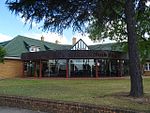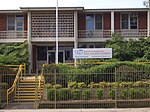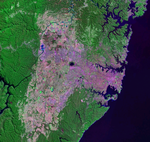Northmead European rock carvings
New South Wales State Heritage RegisterUse Australian English from June 2018
Northmead European Rock carvings is a heritage-listed rock engraving at 226 (rear) Windsor Road, Northmead, City of Parramatta, New South Wales, Australia. It was added to the New South Wales State Heritage Register on 2 April 1999.
Excerpt from the Wikipedia article Northmead European rock carvings (License: CC BY-SA 3.0, Authors).Northmead European rock carvings
Windsor Road, Sydney Winston Hills
Geographical coordinates (GPS) Address Nearby Places Show on map
Geographical coordinates (GPS)
| Latitude | Longitude |
|---|---|
| N -33.7734 ° | E 150.9983 ° |
Address
The WIllows Retirement Village
Windsor Road 226
2153 Sydney, Winston Hills
New South Wales, Australia
Open on Google Maps








